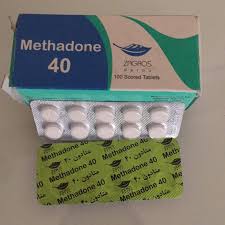Rivotril: A Comprehensive Guide to Clonazepam Use, Effects & Risks
Rivotril, a brand name for clonazepam, is a prescription medication classified as a benzodiazepine, widely prescribed for conditions such as seizure disorders, panic attacks, and anxiety. While highly effective when used correctly, Rivotril also poses serious risks when misused, including dependency, cognitive impairment, and withdrawal complications.
Rivotril’s approved uses, dosage guidelines, pharmacology, potential for abuse, and legal considerations — designed for individuals seeking clarity and professionals guiding safe medication use.
What Is Rivotril (Clonazepam)?
Rivotril contains clonazepam, a long-acting central nervous system (CNS) depressant that works by enhancing the action of gamma-aminobutyric acid (GABA) — a neurotransmitter that calms brain activity. The result is reduced neuronal excitability, which helps in controlling seizures, alleviating anxiety, and managing panic disorders.
Quick Facts:
-
Drug class: Benzodiazepine
-
Controlled substance: Schedule IV (varies by country)
-
Brand names: Rivotril, Klonopin (U.S.), Clonotril
-
Administration: Oral tablets or drops
Approved Medical Uses of Rivotril
Rivotril is medically indicated for:
-
Epilepsy: Especially myoclonic and absence seizures
-
Panic disorder: Reduces sudden surges of intense fear
-
Anxiety disorders: Short-term relief for generalized anxiety
-
Muscle spasms: In neurological conditions
-
Bipolar disorder (off-label): Occasionally used for stabilization
In pediatric cases, it may also be prescribed under close supervision for infantile spasms and Lennox-Gastaut syndrome.
Dosage Guidelines
Adults (Seizure Control):
-
Initial: 0.5 mg twice daily
-
Maintenance: Usually 1.5–20 mg/day depending on patient response
-
Maximum: 20 mg/day in divided doses
Adults (Panic Disorder):
-
Initial: 0.25 mg twice daily
-
Titrated gradually to 1–4 mg/day
Pediatric:
-
Doses are strictly weight-based and initiated at low levels
Special Considerations:
-
Dosage must be tapered slowly to prevent withdrawal
-
Should be taken at the same times daily
-
Avoid abrupt cessation
Pharmacological Profile
Rivotril has:
-
High bioavailability (~90%)
-
Peak plasma concentration in 1–4 hours
-
Half-life: 30–40 hours (long duration)
-
Metabolism: Liver (CYP3A family)
-
Elimination: Renal
This long half-life contributes to accumulation, especially in the elderly or those with liver impairment.
Side Effects of Rivotril
Common:
-
Drowsiness
-
Muscle weakness
-
Dizziness
-
Impaired coordination
-
Difficulty concentrating
Serious:
-
Respiratory depression (especially with opioids/alcohol)
-
Depression or suicidal thoughts
-
Paradoxical reactions (agitation, rage, hallucinations)
-
Dependence and withdrawal symptoms
Withdrawal and Dependence Risks
Long-term or high-dose use increases the risk of:
-
Physical dependence
-
Tolerance (requiring higher doses)
-
Severe withdrawal including seizures, anxiety, tremors, and hallucinations
Withdrawal should only occur under medical supervision, often through a slow tapering process and sometimes with adjunct medications.
Rivotril vs Other Benzodiazepines
| Feature | Rivotril (Clonazepam) | Xanax (Alprazolam) | Valium (Diazepam) |
|---|---|---|---|
| Onset | Intermediate | Rapid | Rapid |
| Duration | Long (30–40 hrs) | Short (11–15 hrs) | Long (20–70 hrs) |
| Abuse Potential | Moderate | High | Moderate |
| Primary Use | Seizures, anxiety | Anxiety, panic | Anxiety, muscle spasms |
Legal Status and Regulation
-
France: Available with prescription under Rivotril brand
-
Canada and NZ: Prescription-only, monitored for misuse
-
U.S.: Clonazepam is legal, but Rivotril as a brand is not sold
-
Controlled Substance Classification: Schedule IV (low to moderate abuse potential)
Importation without prescription is illegal in most jurisdictions.
Recreational Use and Misuse
Rivotril is sometimes misused for its euphoric, calming, or sedative effects, particularly when:
-
Combined with alcohol
-
Crushed and snorted
-
Taken in doses higher than prescribed
This raises the risk of overdose, especially when used with other CNS depressants, leading to slowed breathing, unconsciousness, and even death.
Signs of Abuse or Addiction
-
Taking larger doses than prescribed
-
Doctor shopping for multiple prescriptions
-
Withdrawal symptoms without the drug
-
Neglecting responsibilities or relationships
-
Using the drug for purposes other than treatment
Treatment for Rivotril Dependence
Recovery often includes:
-
Medically supervised detox
-
Gradual dose tapering
-
Psychotherapy (CBT)
-
Support groups and relapse prevention
Facilities specializing in benzodiazepine detox are best equipped for managing difficult withdrawals and relapse risk.
How to Use Rivotril Safely
-
Take only under a doctor’s supervision
-
Avoid alcohol and other sedatives
-
Don’t stop abruptly; taper if discontinuing
-
Monitor for side effects or mood changes
-
Never share your prescription
If you have a history of substance use disorder, discuss alternatives with your provider.
Conclusion: Should You Take Rivotril?
Rivotril can be life-changing for people suffering from epilepsy or panic disorders, but its use must be balanced against the risk of dependence, cognitive decline, and withdrawal. Education and clinical oversight are essential for safe usage.
Mushroom Shoppery advocates responsible use and informed access to pharmaceutical-grade medications. Stay informed and always prioritize your health and safety.









Reviews
There are no reviews yet.